Hours after the 129-year-old kiawe tree outside House Without A Key fell in the night, artist John Koga received a phone call. It was Halekulani’s executive team. They sought his advice for a looming task: What is a proper way to handle the deconstruction of its tremendous branches? Koga, who had regularly displayed artwork on the hotel’s grounds, suggested they try to save every bit of the timber. He didn’t know exactly what for, only that it would be wise to salvage and store all of it for the sake of art.
The first creation born of the idea to repurpose the kiawe’s lost branches into something new and lasting has taken shape as a vessel set before the hotel’s check-in counters. Koga worked with Hiromi Sugioka, a Sogetsu ikebana master, to create the living fixture that is now on view: a hollowed-out vase composed of reclaimed wood that bursts forth with a high-and-wide floral arrangement. One week, it features a gallant display of ferns among a delirium of white and red anthuriums punctuated by bubblegum pink-hued heliconia that dangle like crystals from a chandelier. The next week, this fountain of flowers is envisioned afresh. Here, in the center of the lobby at Halekulani, harmony constantly takes shape.
“I wanted to revive this kiawe in a new form,” said Sugioka, who conceived of the piece and directed its creation. Over the Thanksgiving holiday in 2018, Sugioka and Koga worked on the project at Koga’s Mānoa home. Though the two artists come from different disciplines, what they share is an obedience to organic forms and an exacting eye. Referencing the Sogetsu sensei’s hand-drawn design of the vessel, Koga labored to find practical ways to assemble it—cutting, fitting, stacking, and drilling stumps together on the floor of his studio. “He was able to construct and make into a reality exactly what I have envisioned for this project,” Sugioka said.
The finished shape honors the tree’s natural, woodsy character with soft and wavy edges that follow the curves of each branch. Contrasted with this are sawed surfaces left intentionally rough and unfinished. In an appeal to ikebana’s enthusiasm for balance and form, the chest-high sculpture is made to be conspicuous without being flamboyant. The vase is sturdy enough to physically support all sorts of arrangements, but fluid enough to become one with them. It should breeze over the guests like a “breath of fresh air,” Koga said, that “represents all of Hawai‘i’s nature and beauty coming together in one little object.”
With the kiawe sculpture complete and in place at the Halekulani lobby, Sugioka composed its first arrangement. She placed and moved stems in and about the vase slowly but with confidence, like a chess expert moving pieces around a chessboard. Every motion she made appeared clear in thought. By the time she placed the final stem, the sculpture had taken on a numinous air. For Koga, witnessing an artist of Sugioka’s caliber at work and experiencing her reverence for Halekulani’s kiawe was “the most beautiful part of this journey.”
Sugioka, as an ikebana practitioner, treats her usual medium—the islands’ tropical flora—with the same measured degree of deliberation that renowned classic artists have given plants and their blooms: van Gogh’s irises, O’Keeffe’s engorged petals, Manet’s prosaic attention to peonies in a crystal vase. As subject matter, flowers and foliage graciously grant artists and observers reason to slow down, pause, and reflect. If one takes the time, one can see this in Sugioka and Koga’s piece, in the way its flowers change while the sculpture remains the same. At its most elemental, their collaboration is a reminder that a piece of art can be wrought from the quotidian earth.
Hours after the 129-year-old kiawe tree outside House Without A Key fell in the night, artist John Koga received a phone call. It was Halekulani’s executive team. They sought his advice for a looming task: What is a proper way to handle the deconstruction of its tremendous branches? Koga, who had regularly displayed artwork on the hotel’s grounds, suggested they try to save every bit of the timber. He didn’t know exactly what for, only that it would be wise to salvage and store all of it for the sake of art.
The first creation born of the idea to repurpose the kiawe’s lost branches into something new and lasting has taken shape as a vessel set before the hotel’s check-in counters. Koga worked with Hiromi Sugioka, a Sogetsu ikebana master, to create the living fixture that is now on view: a hollowed-out vase composed of reclaimed wood that bursts forth with a high-and-wide floral arrangement. One week, it features a gallant display of ferns among a delirium of white and red anthuriums punctuated by bubblegum pink-hued heliconia that dangle like crystals from a chandelier. The next week, this fountain of flowers is envisioned afresh. Here, in the center of the lobby at Halekulani, harmony constantly takes shape.
“I wanted to revive this kiawe in a new form,” said Sugioka, who conceived of the piece and directed its creation. Over the Thanksgiving holiday in 2018, Sugioka and Koga worked on the project at Koga’s Mānoa home. Though the two artists come from different disciplines, what they share is an obedience to organic forms and an exacting eye. Referencing the Sogetsu sensei’s hand-drawn design of the vessel, Koga labored to find practical ways to assemble it—cutting, fitting, stacking, and drilling stumps together on the floor of his studio. “He was able to construct and make into a reality exactly what I have envisioned for this project,” Sugioka said.
The finished shape honors the tree’s natural, woodsy character with soft and wavy edges that follow the curves of each branch. Contrasted with this are sawed surfaces left intentionally rough and unfinished. In an appeal to ikebana’s enthusiasm for balance and form, the chest-high sculpture is made to be conspicuous without being flamboyant. The vase is sturdy enough to physically support all sorts of arrangements, but fluid enough to become one with them. It should breeze over the guests like a “breath of fresh air,” Koga said, that “represents all of Hawai‘i’s nature and beauty coming together in one little object.”
With the kiawe sculpture complete and in place at the Halekulani lobby, Sugioka composed its first arrangement. She placed and moved stems in and about the vase slowly but with confidence, like a chess expert moving pieces around a chessboard. Every motion she made appeared clear in thought. By the time she placed the final stem, the sculpture had taken on a numinous air. For Koga, witnessing an artist of Sugioka’s caliber at work and experiencing her reverence for Halekulani’s kiawe was “the most beautiful part of this journey.”
Sugioka, as an ikebana practitioner, treats her usual medium—the islands’ tropical flora—with the same measured degree of deliberation that renowned classic artists have given plants and their blooms: van Gogh’s irises, O’Keeffe’s engorged petals, Manet’s prosaic attention to peonies in a crystal vase. As subject matter, flowers and foliage graciously grant artists and observers reason to slow down, pause, and reflect. If one takes the time, one can see this in Sugioka and Koga’s piece, in the way its flowers change while the sculpture remains the same. At its most elemental, their collaboration is a reminder that a piece of art can be wrought from the quotidian earth.
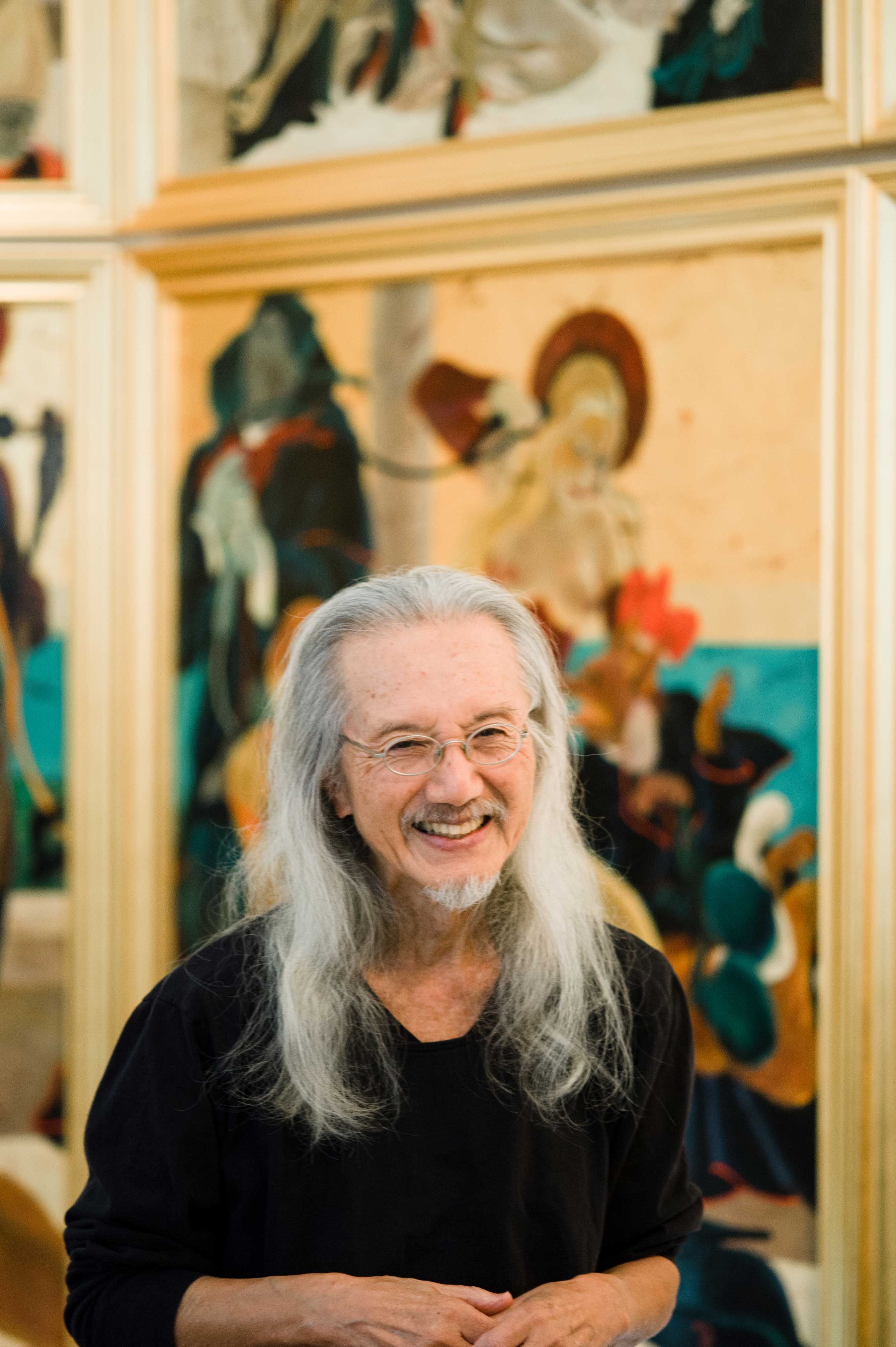
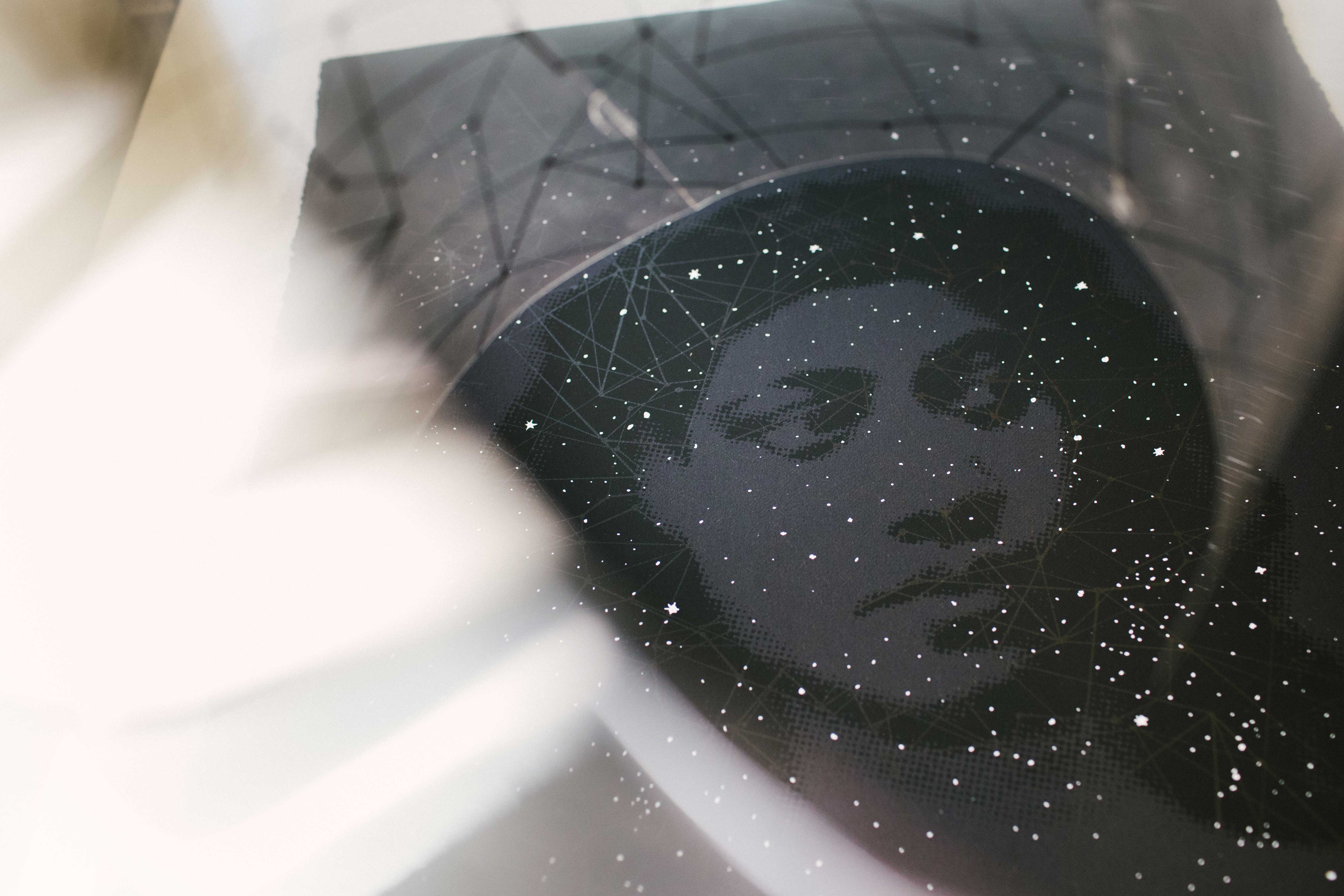

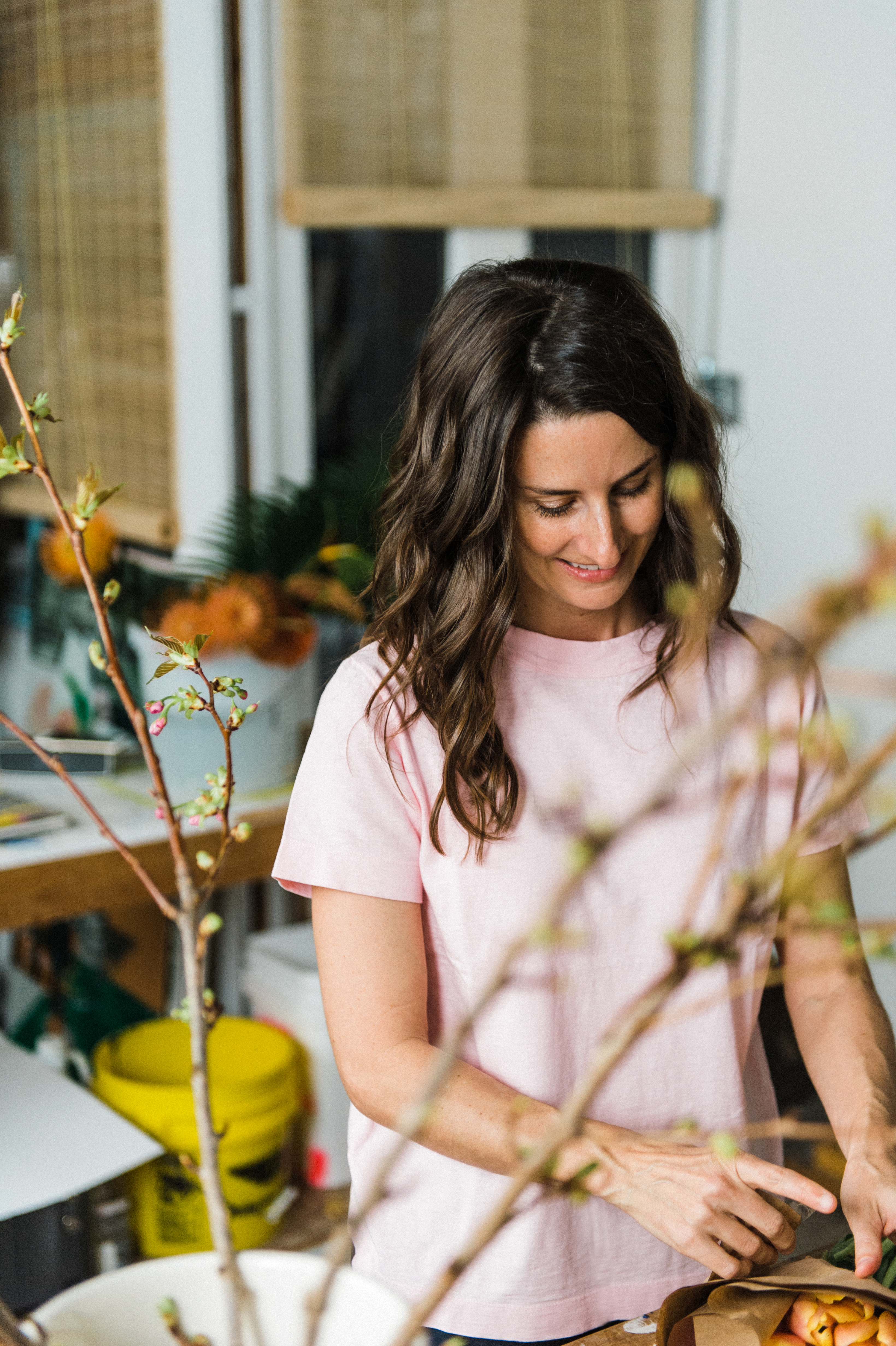
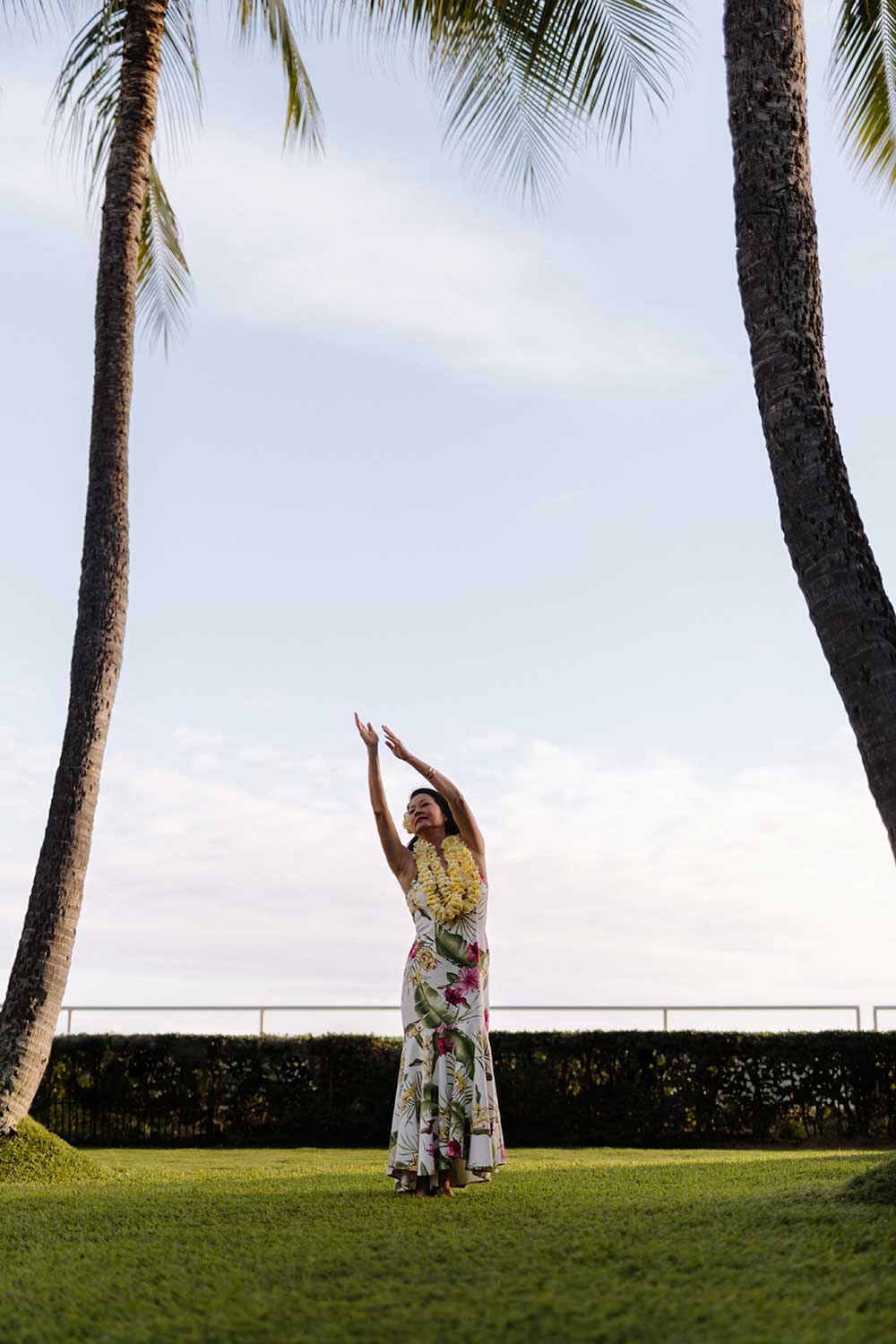
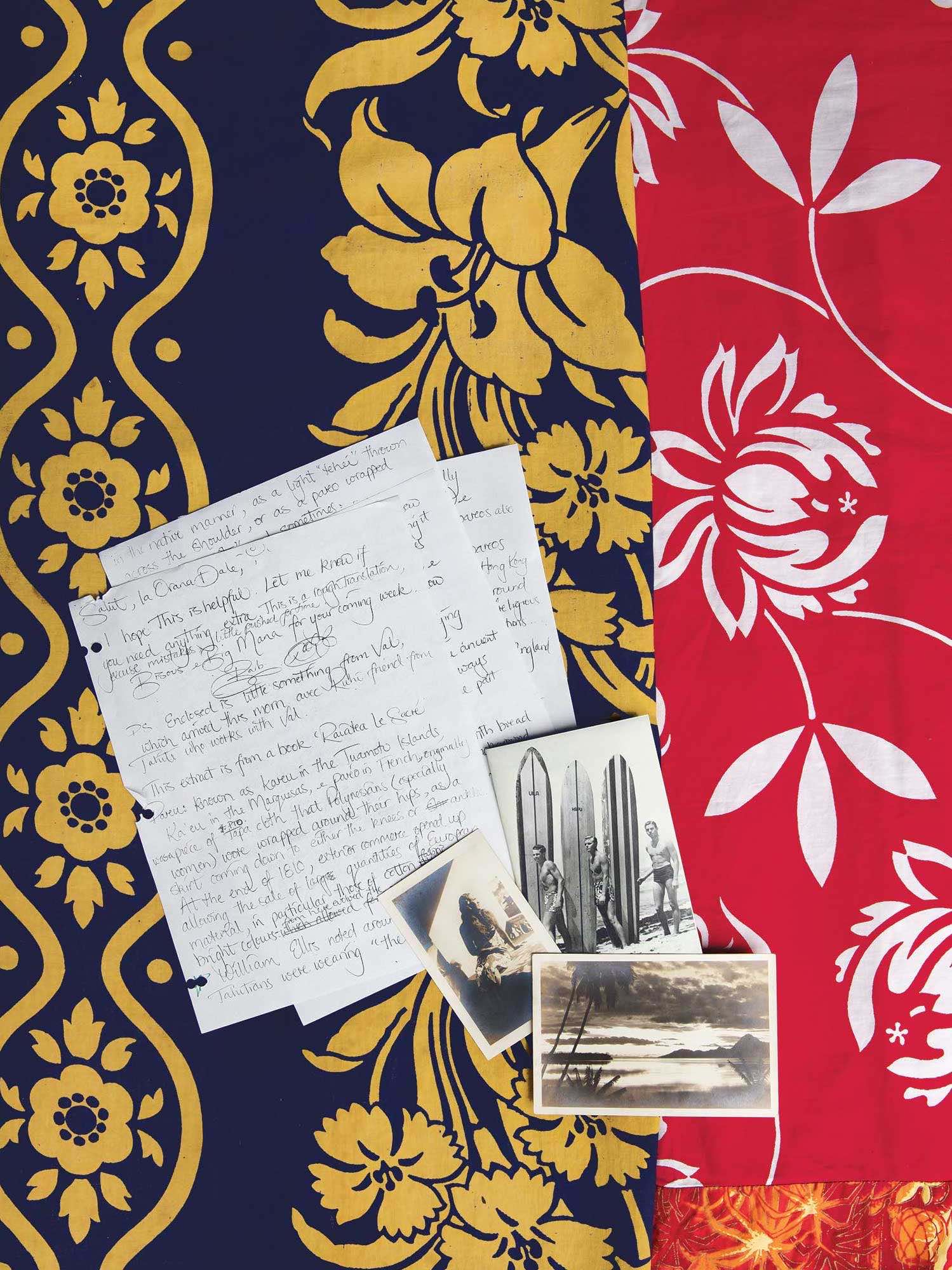
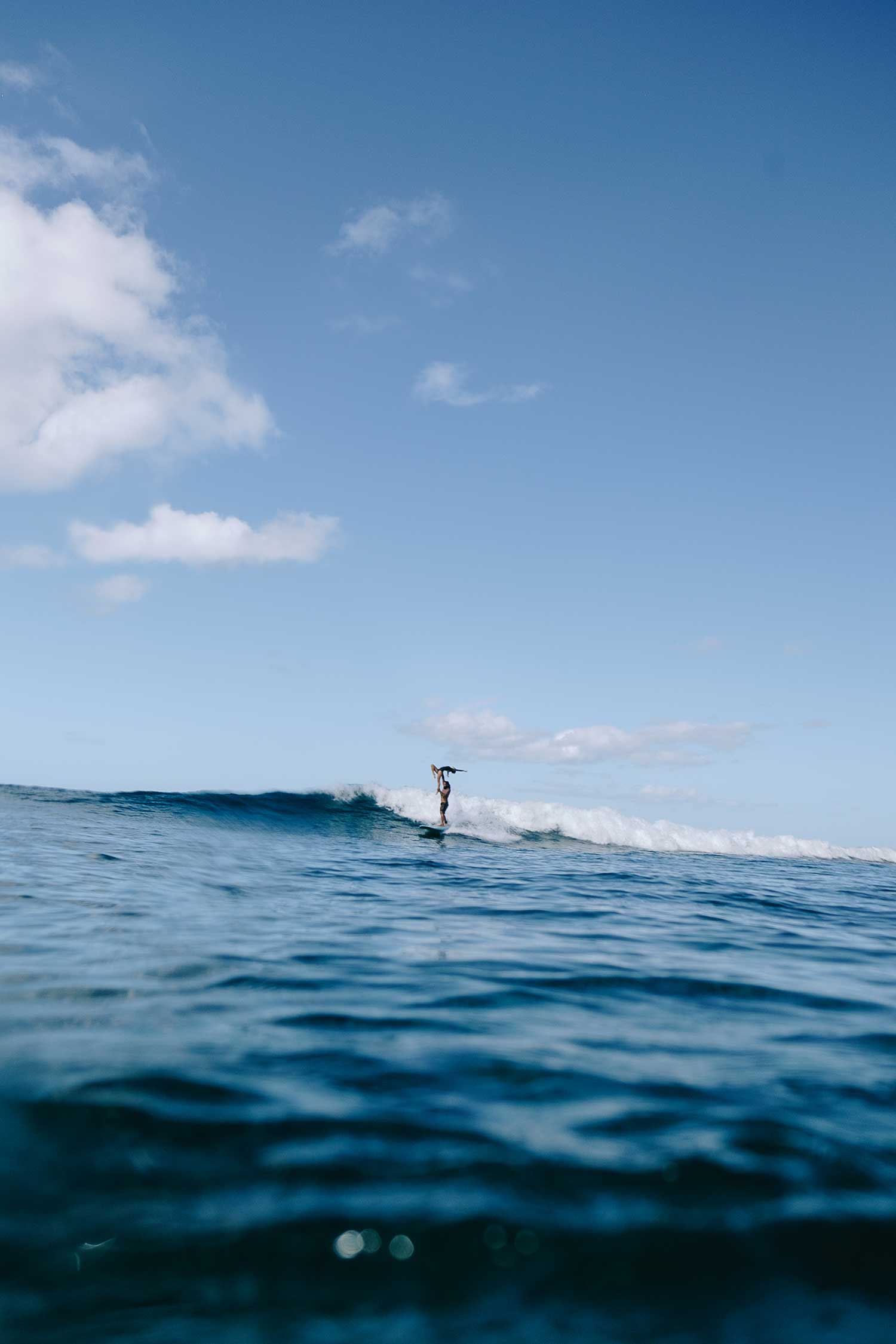
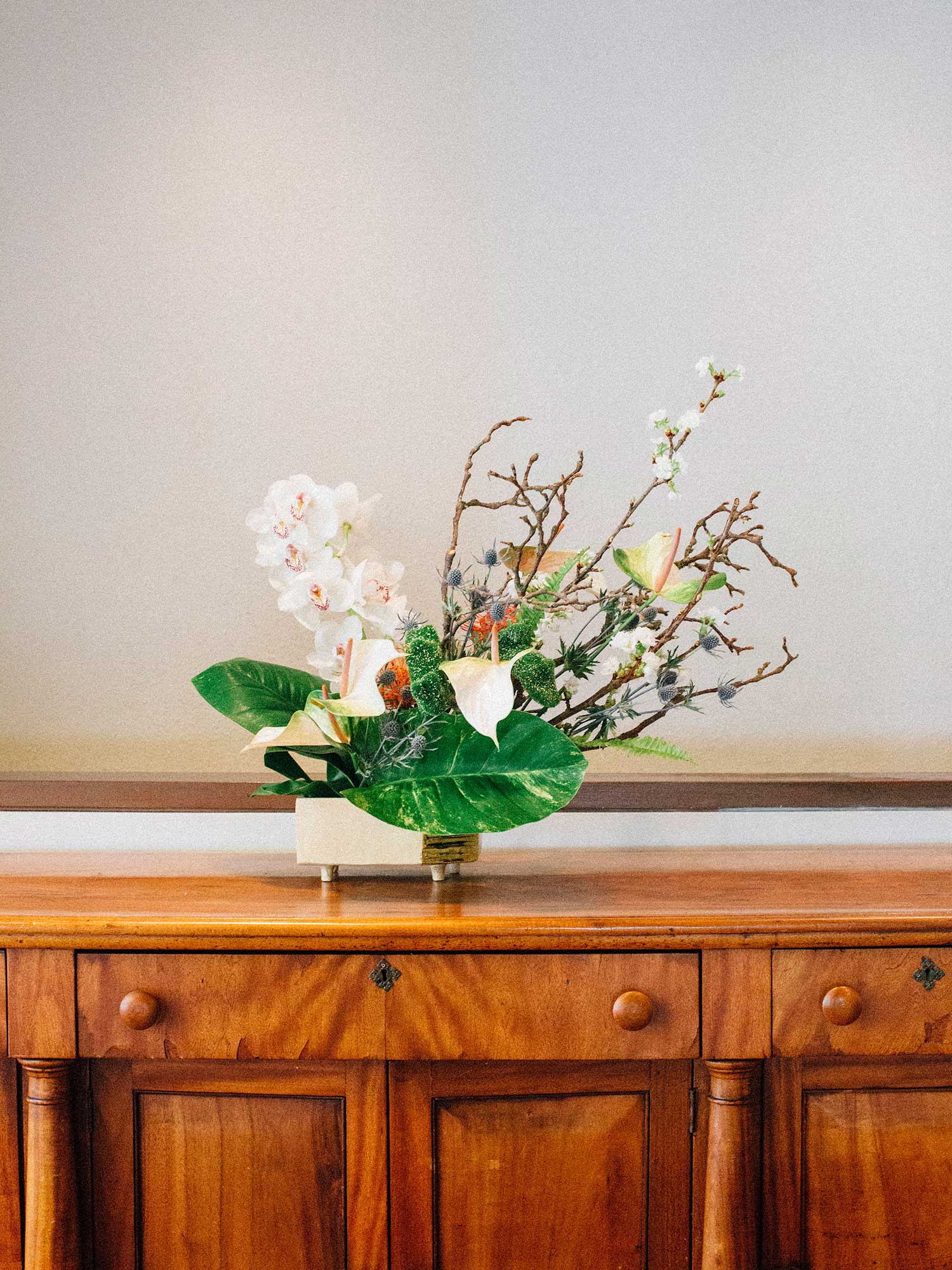
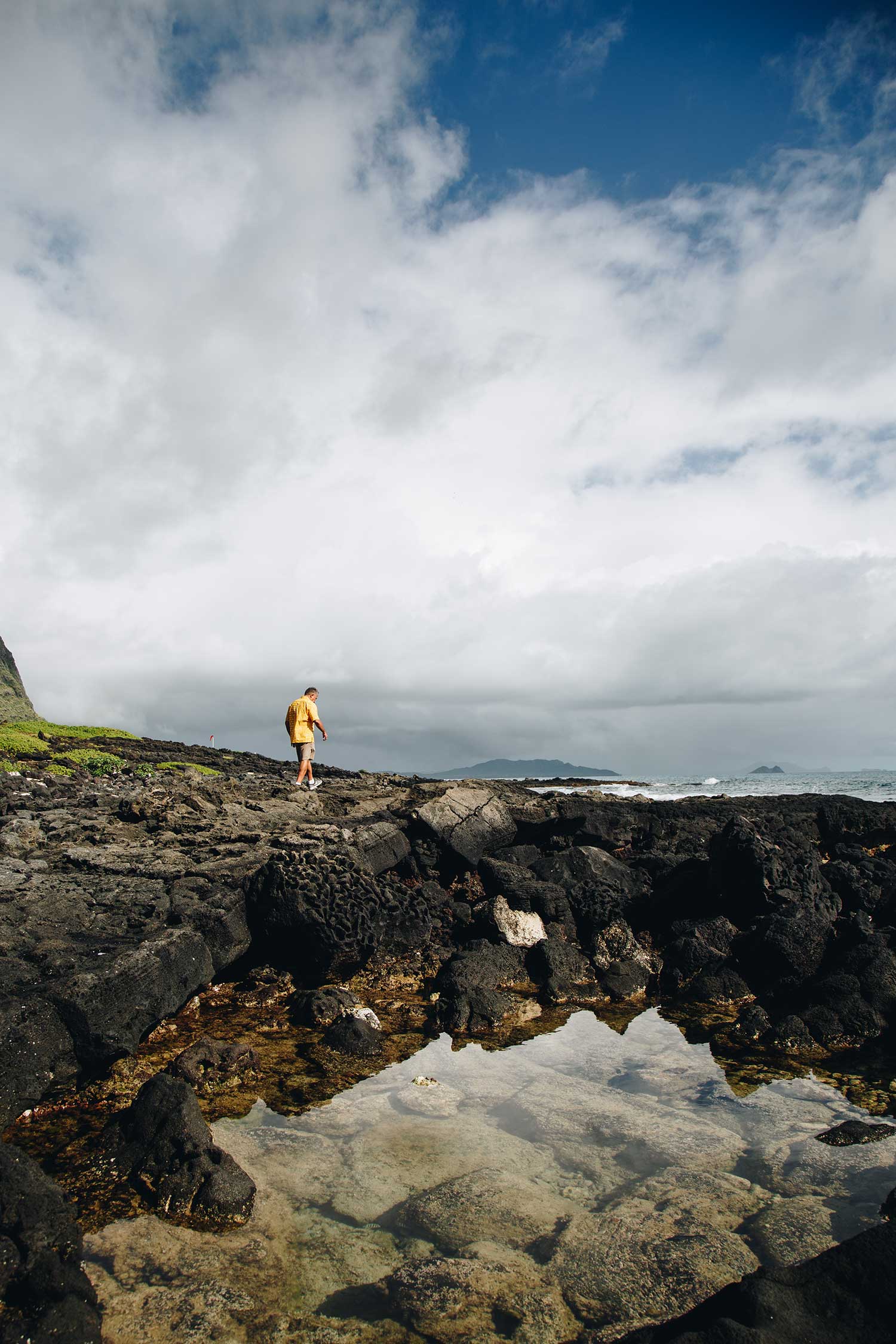
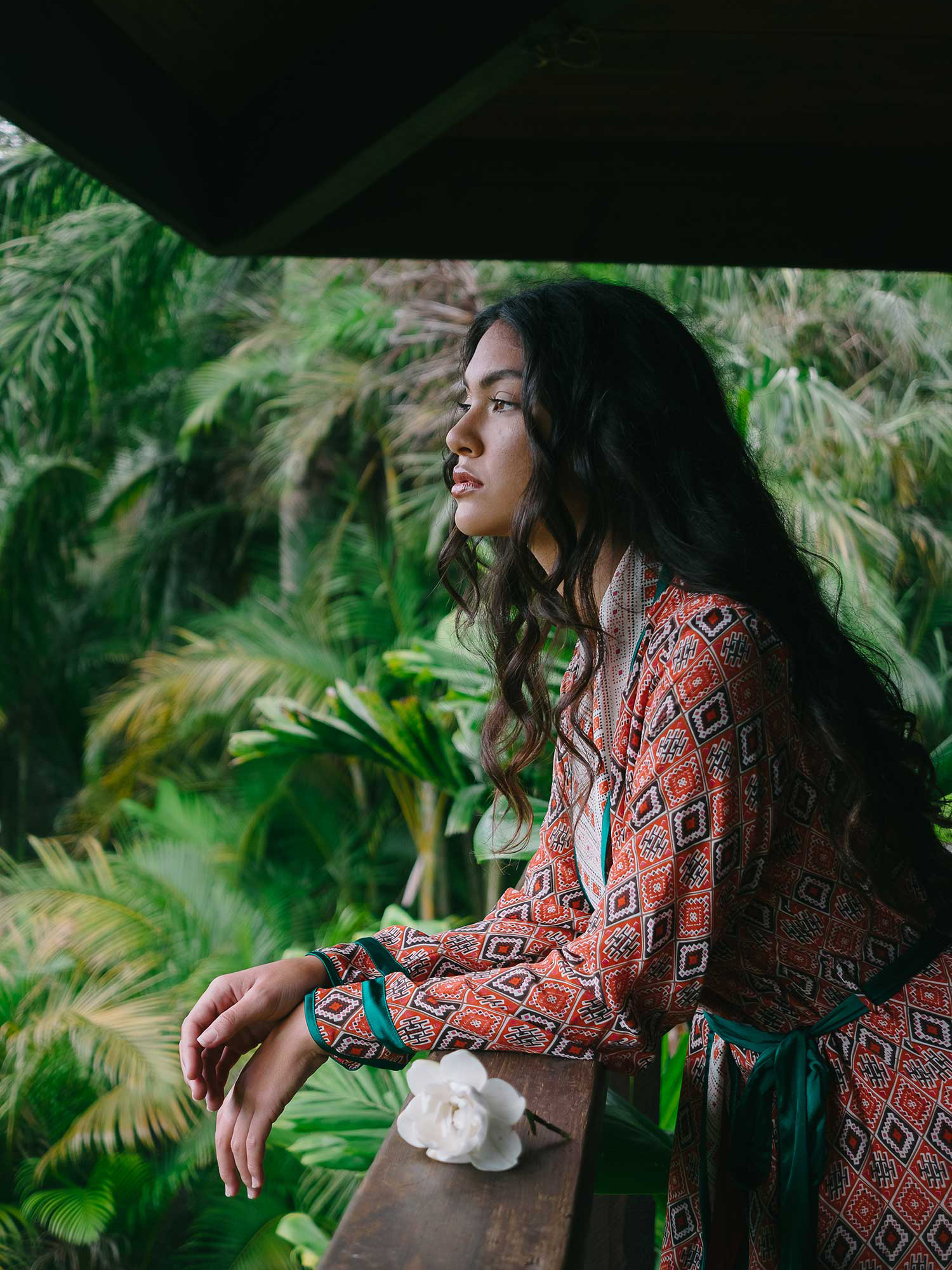
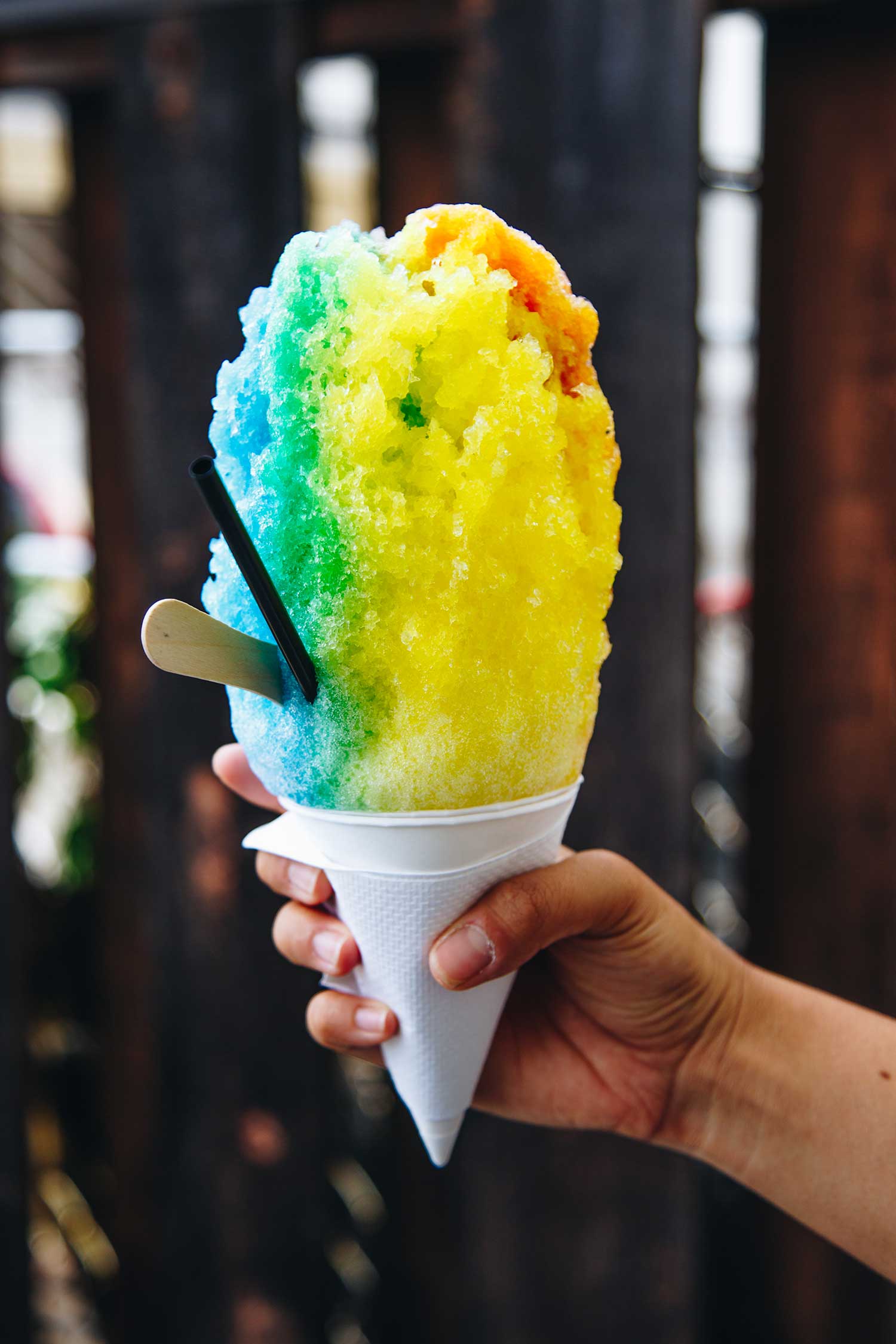
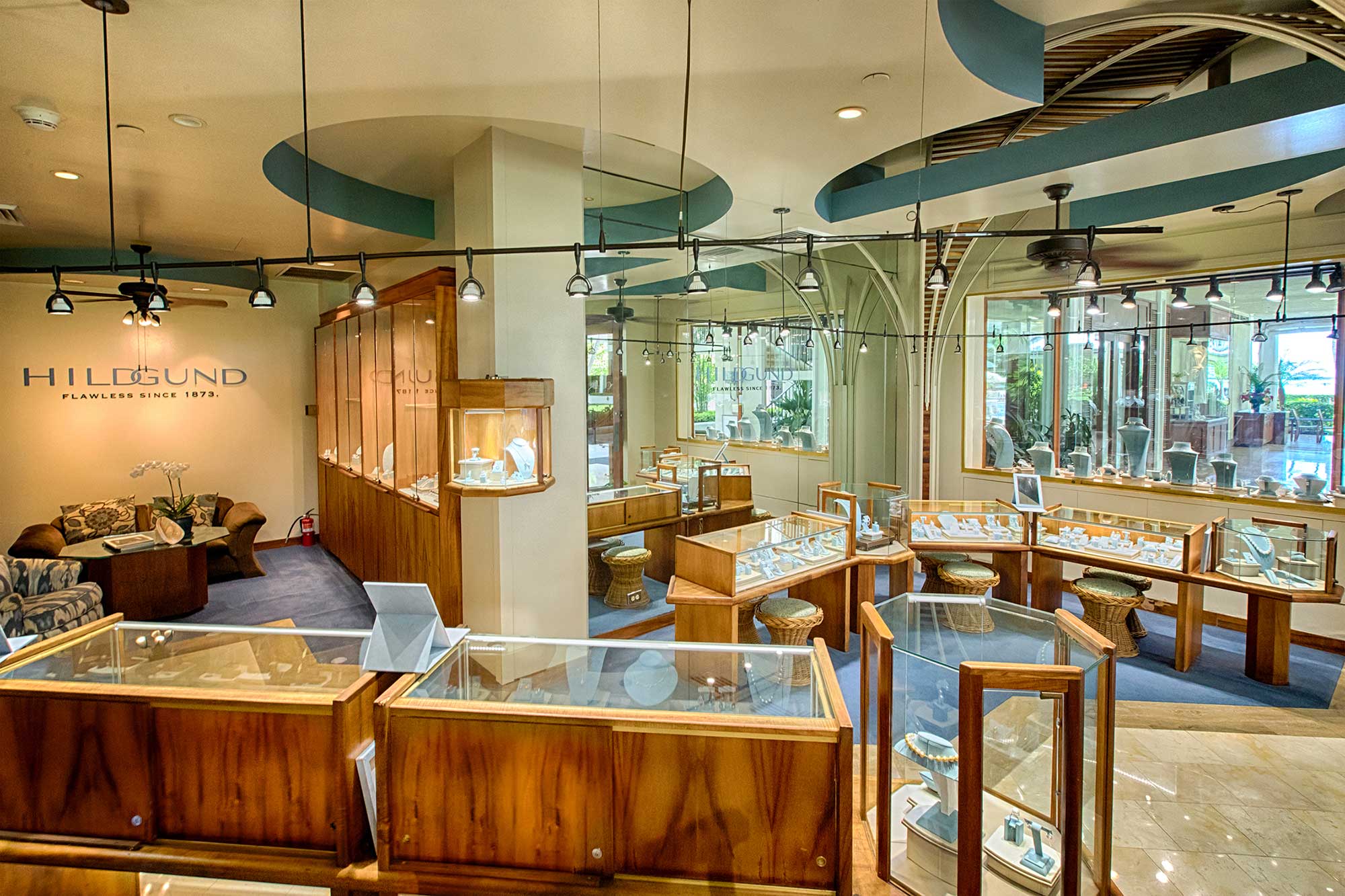
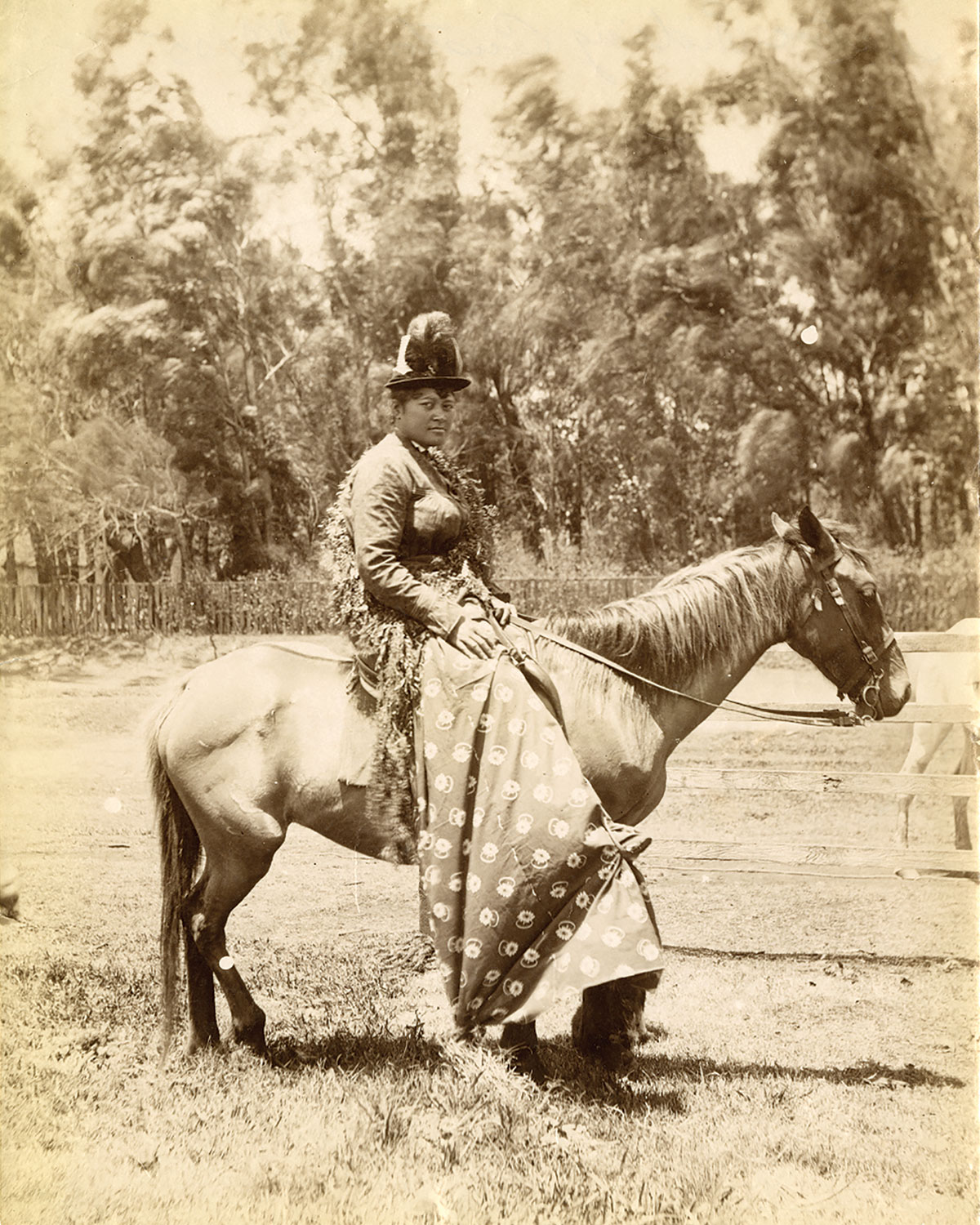
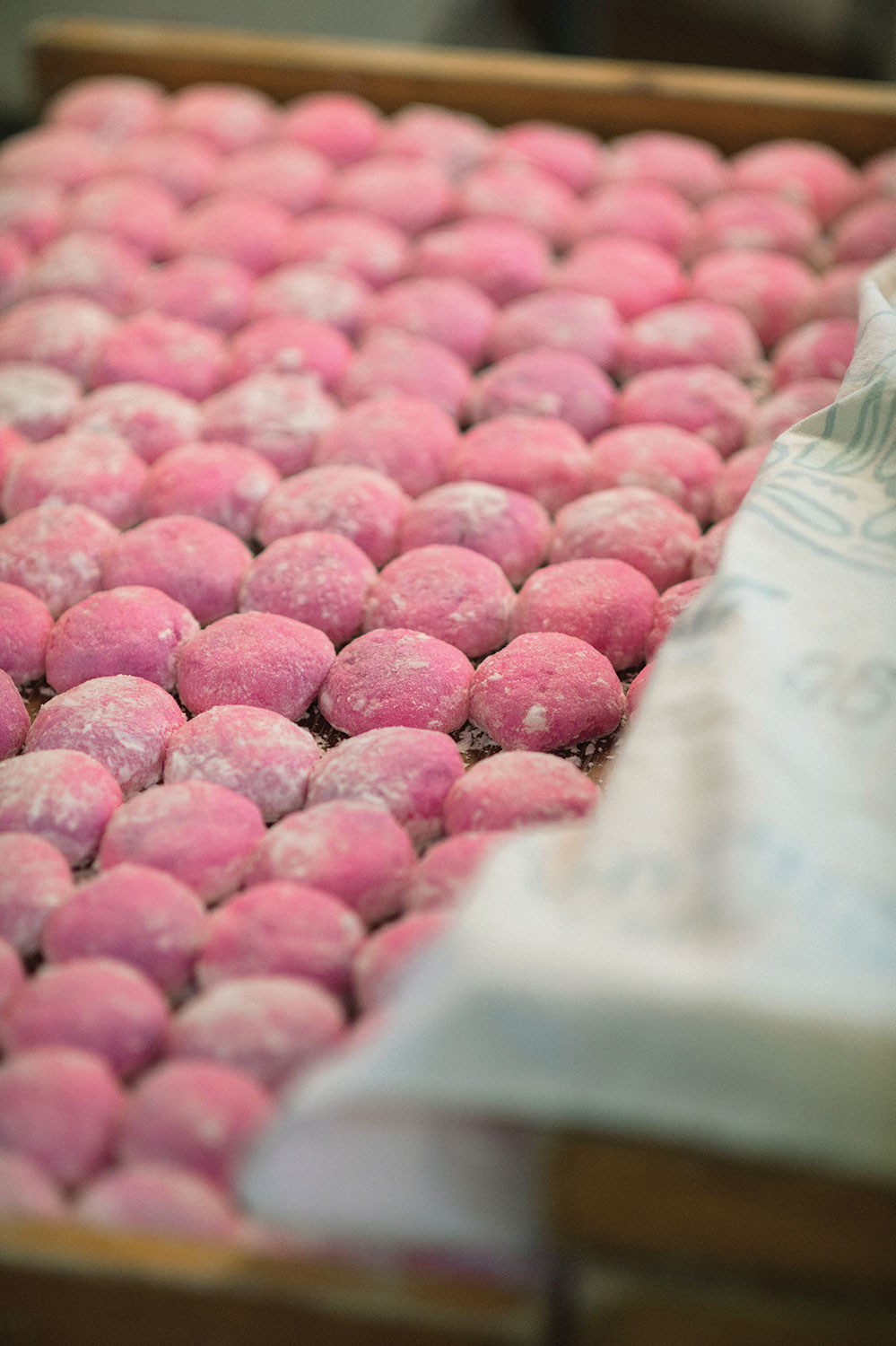
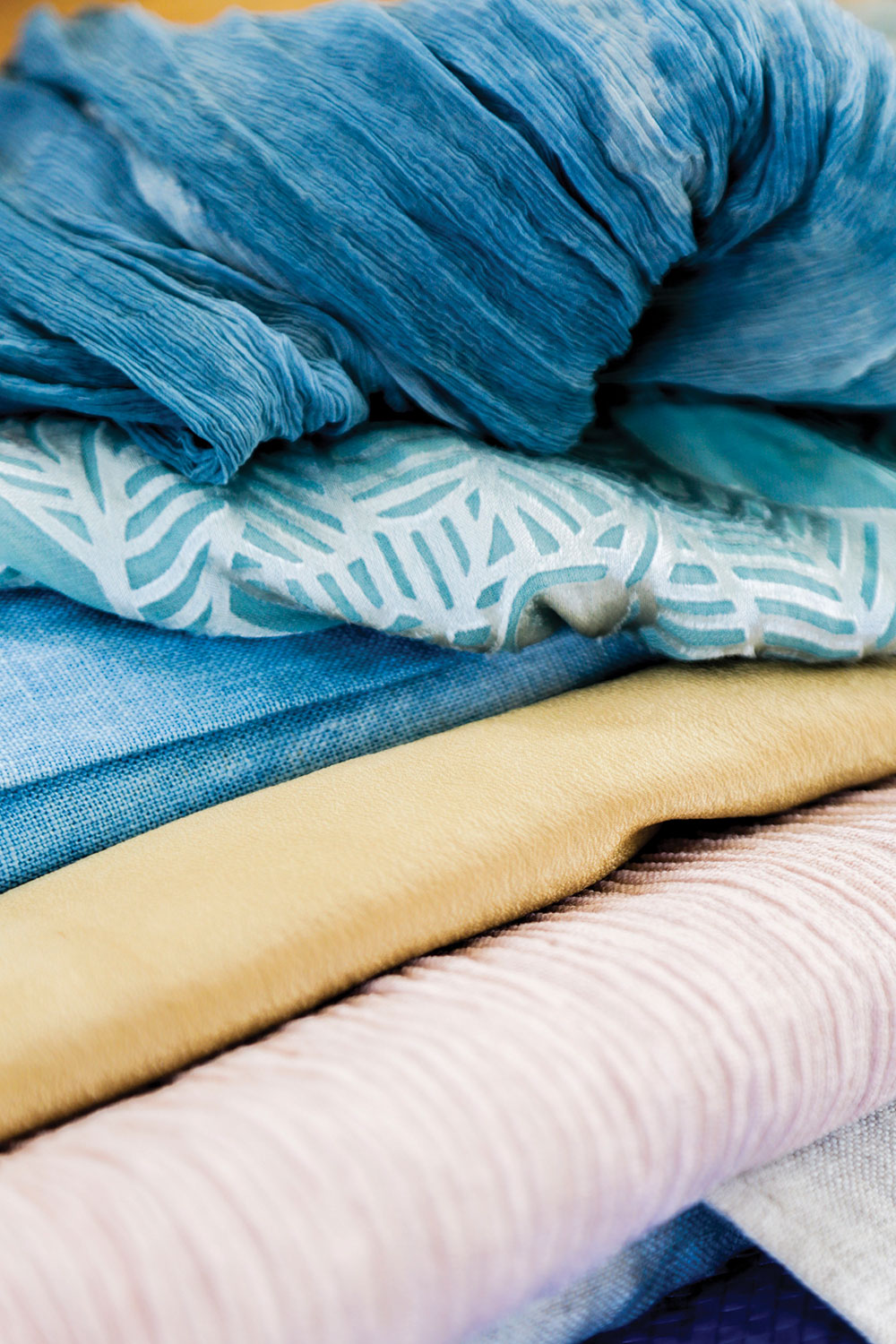
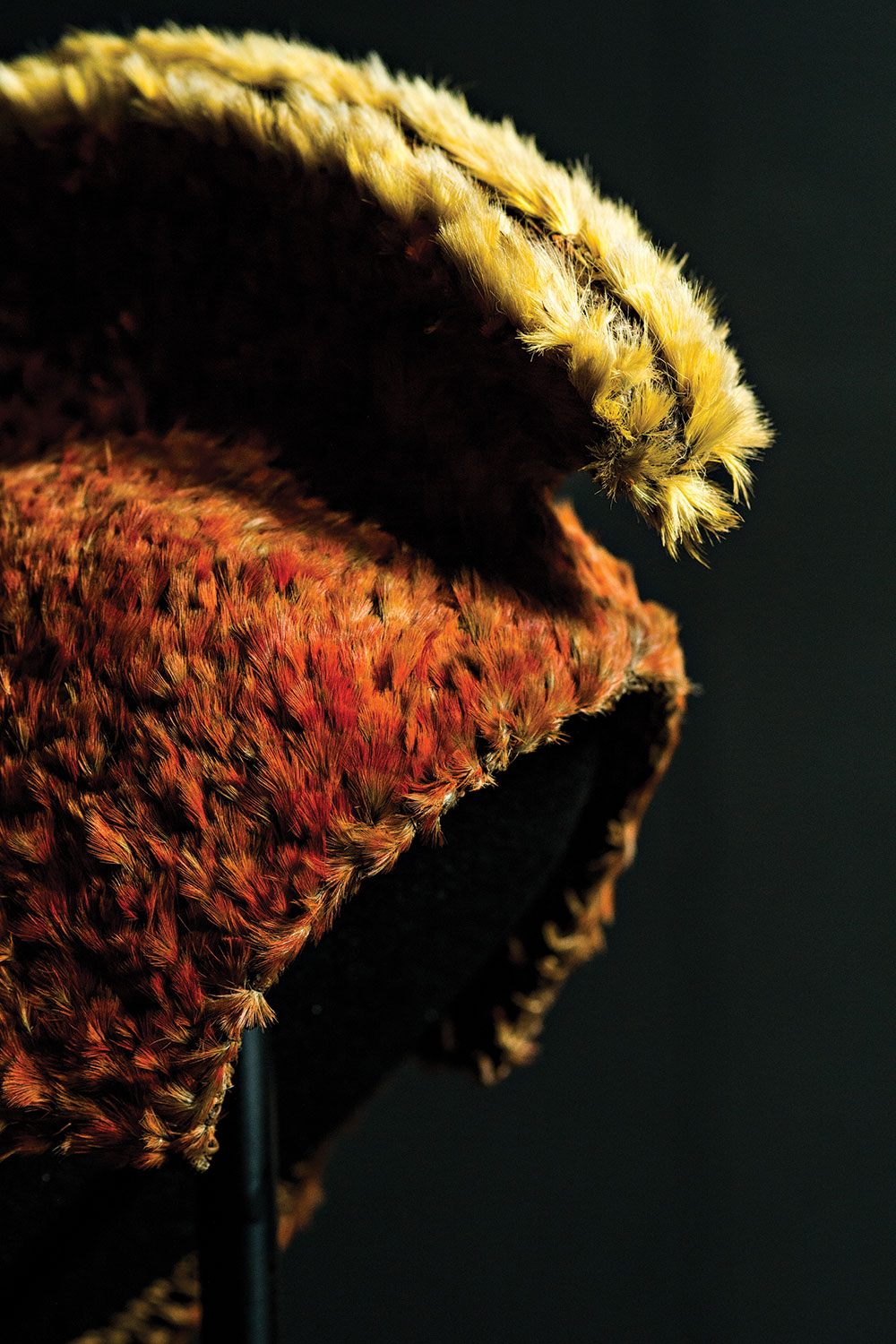
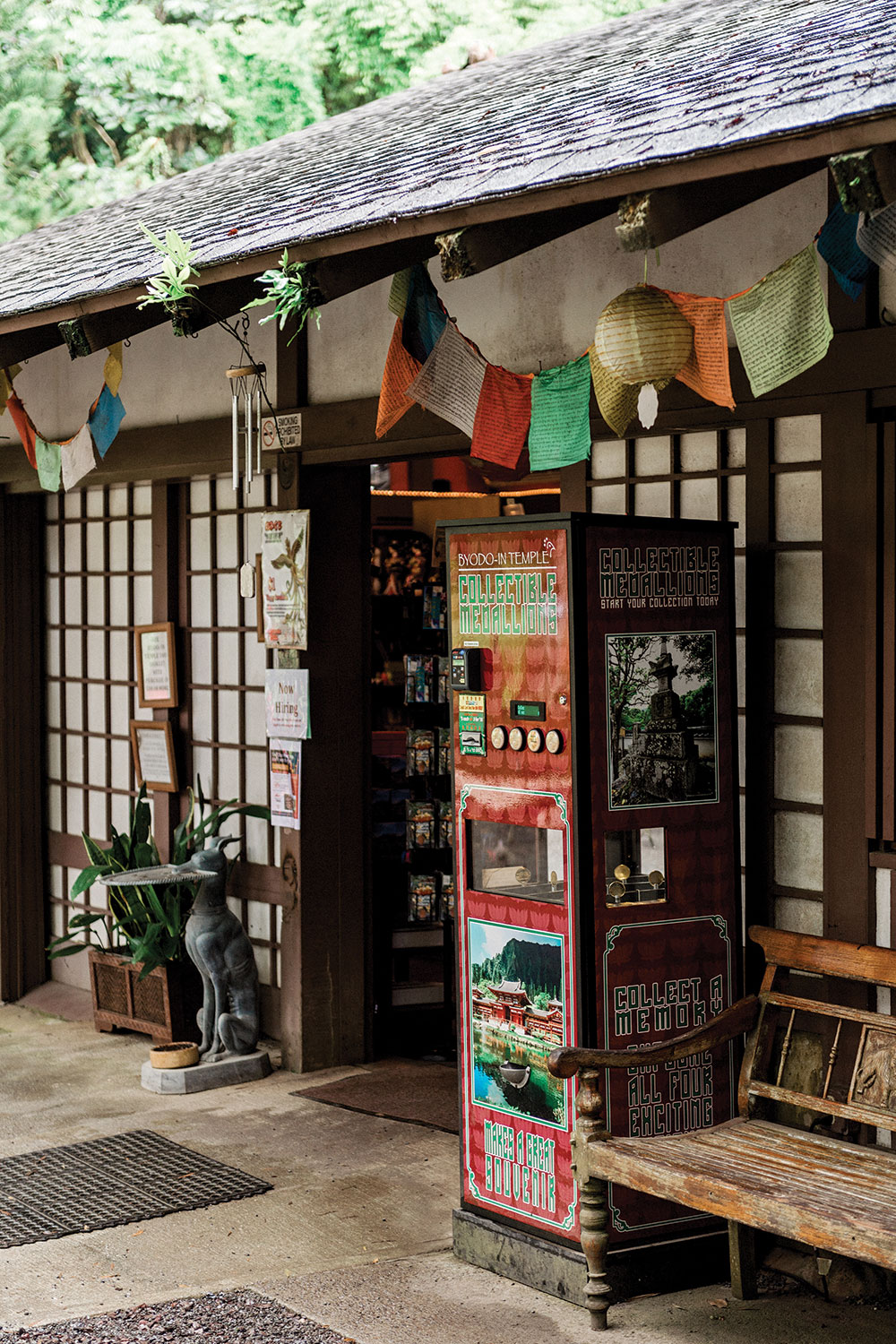
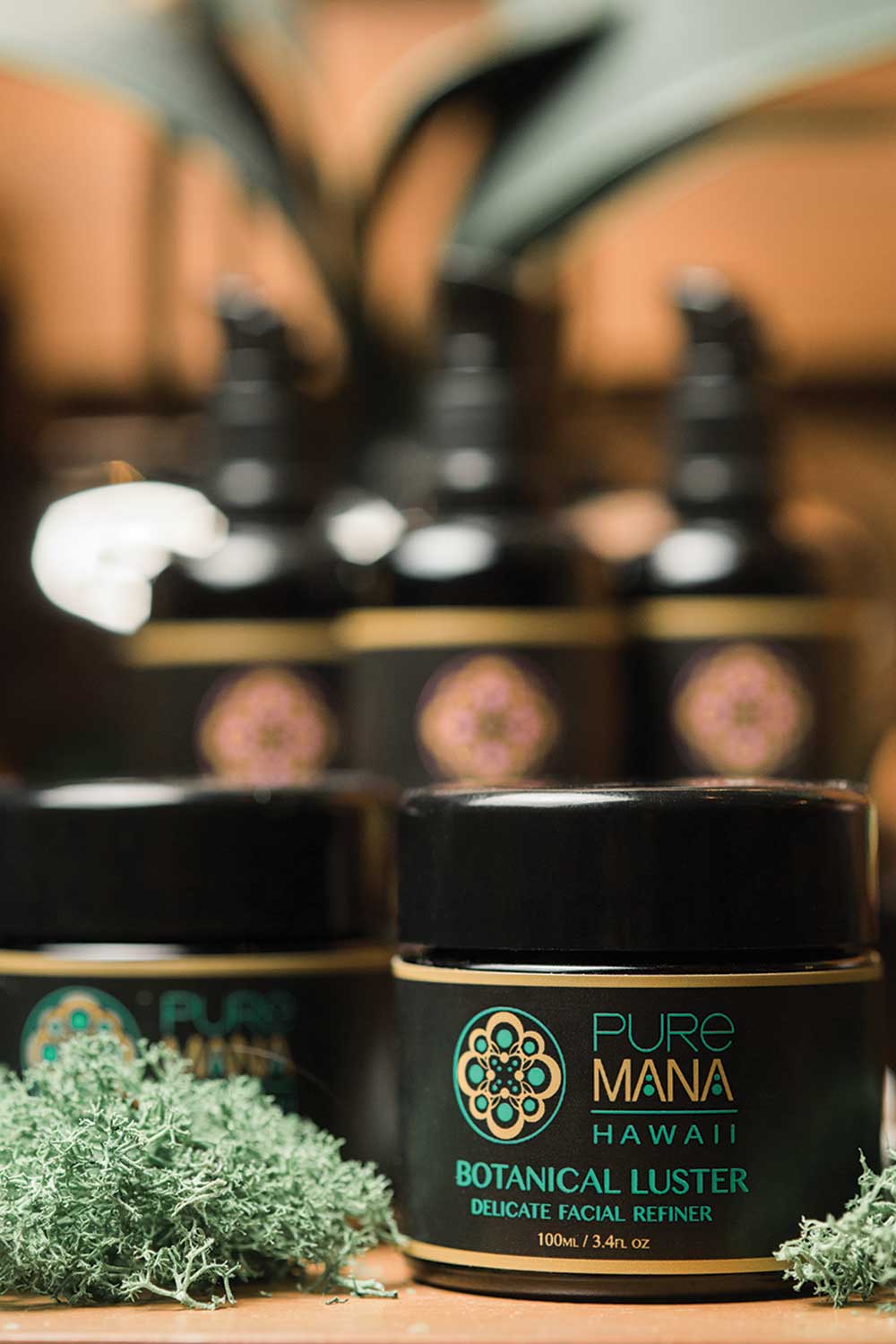
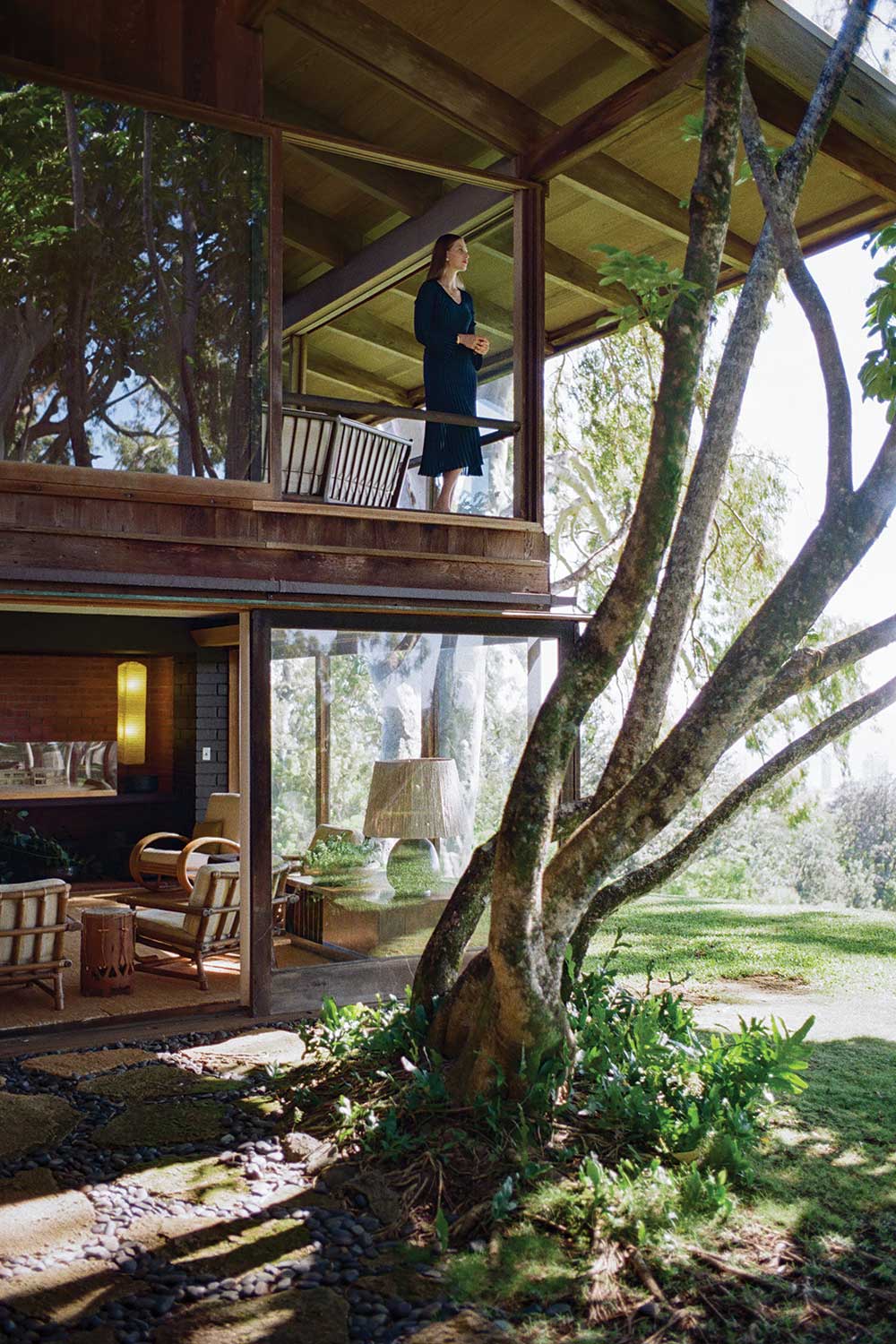
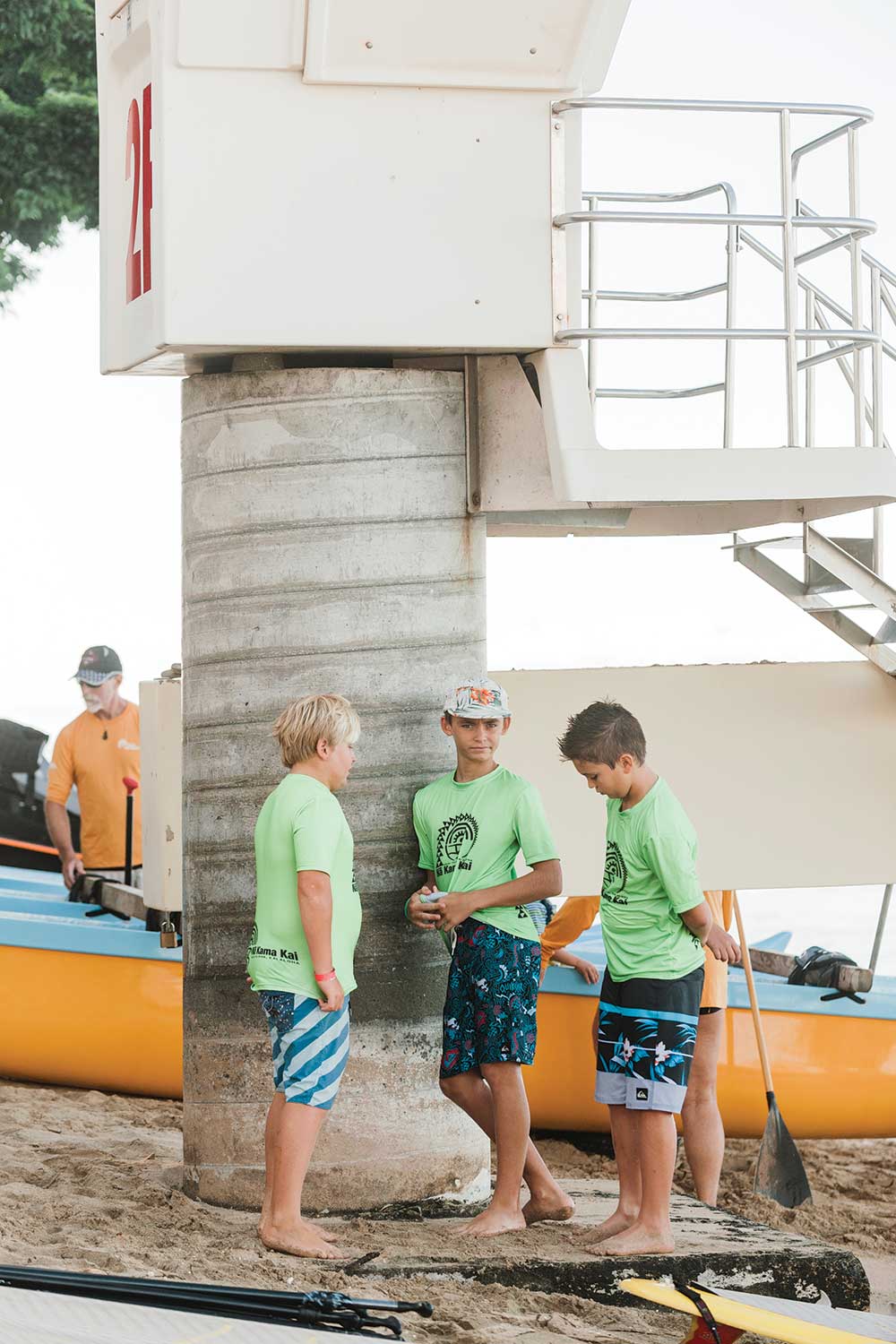
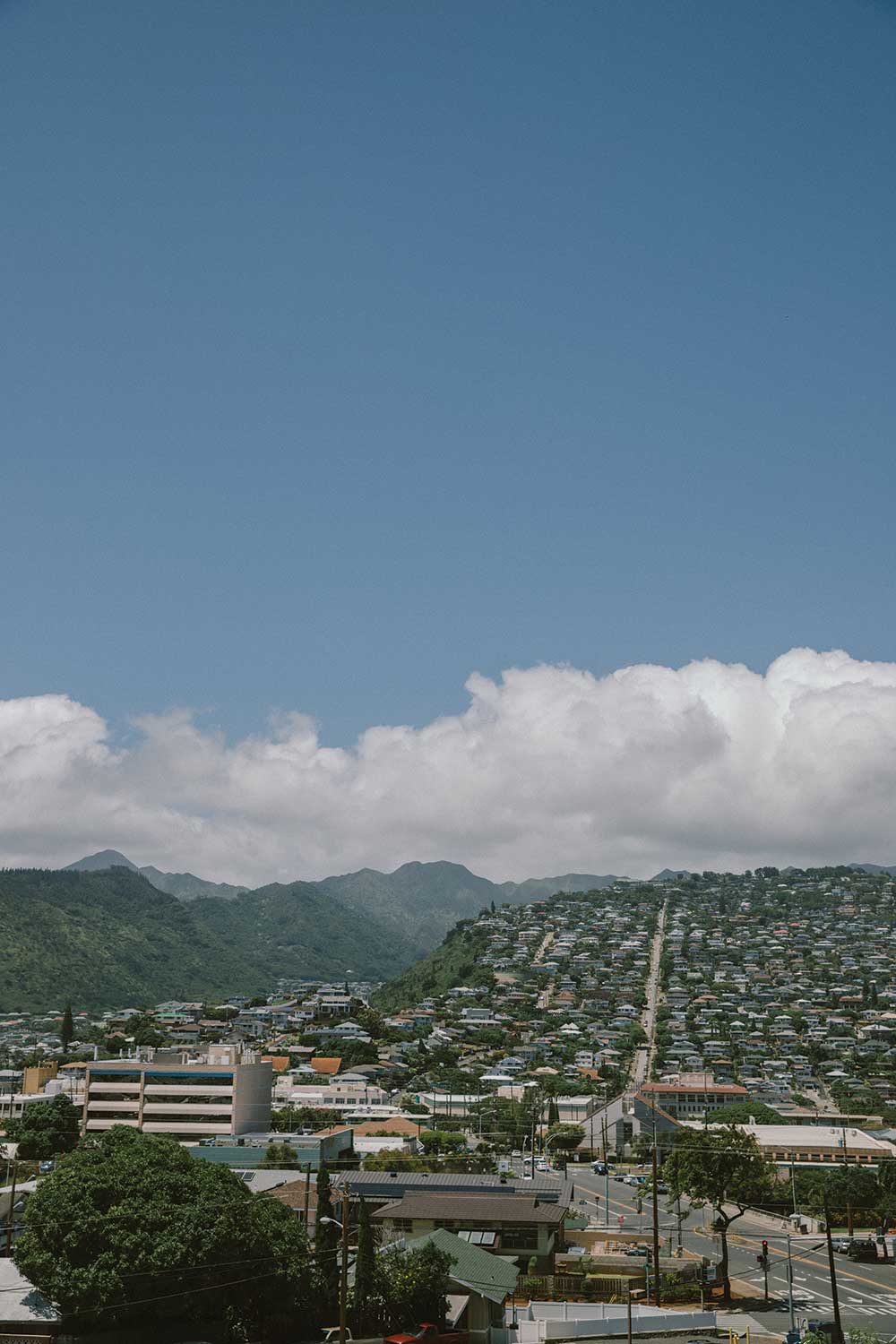

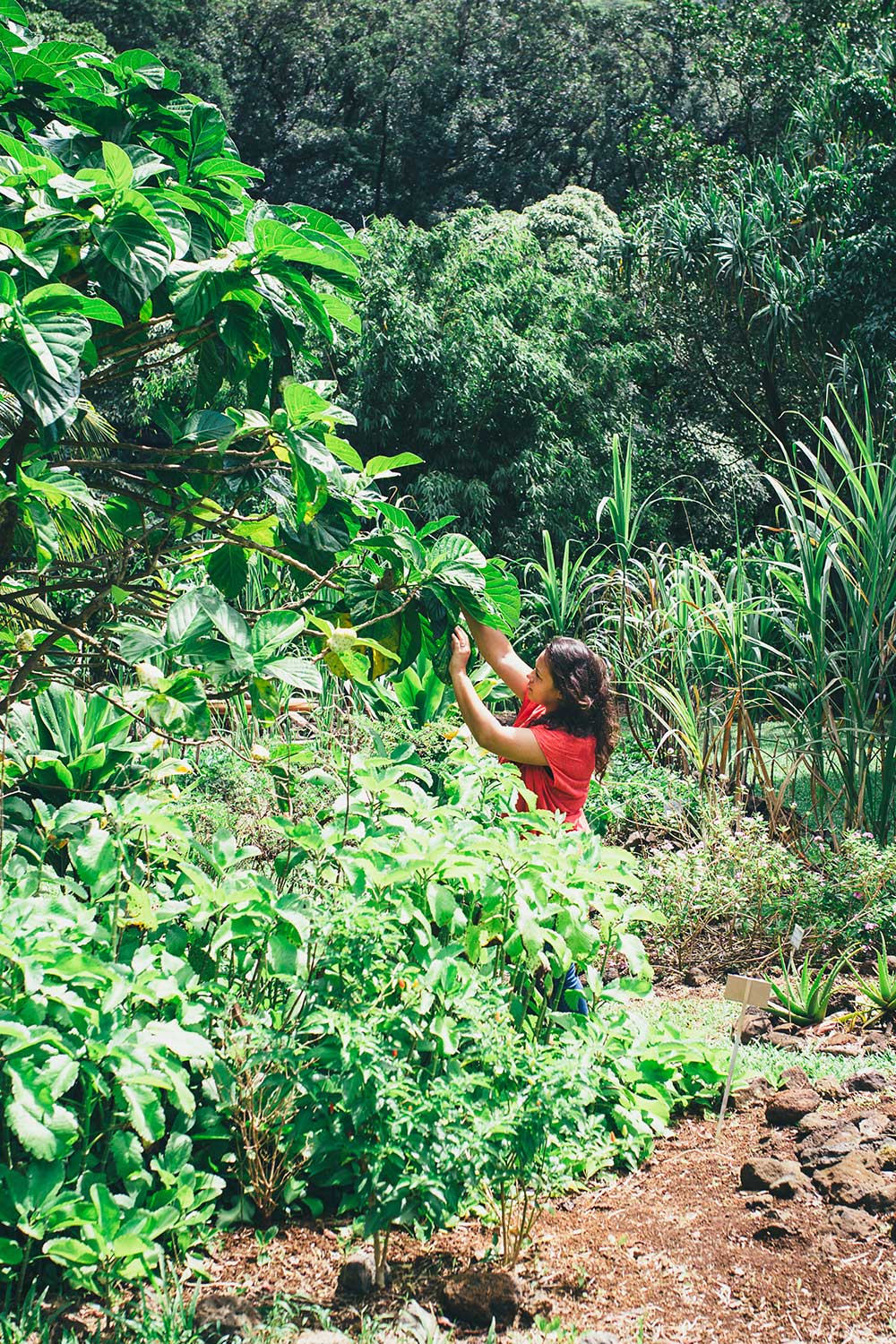

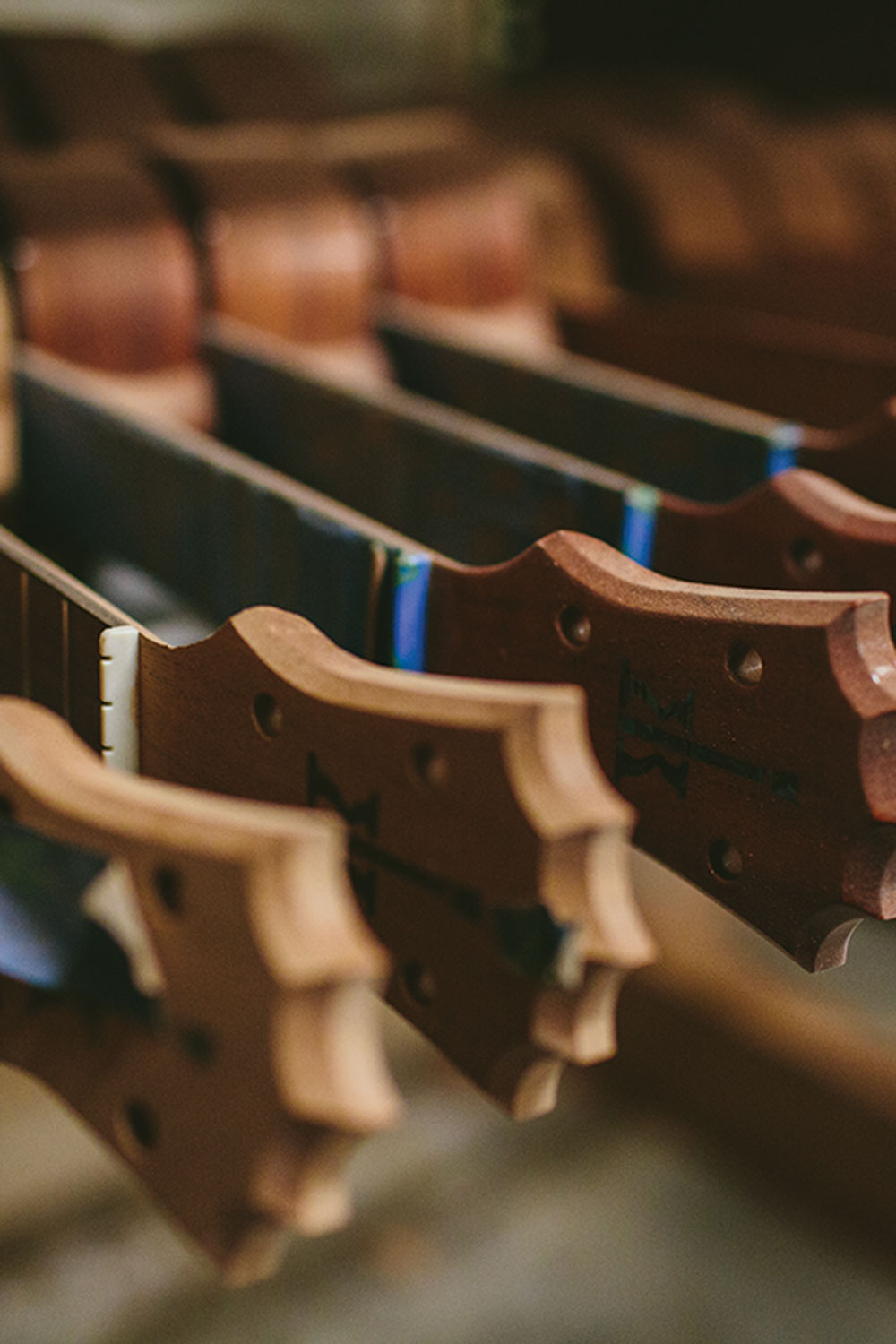
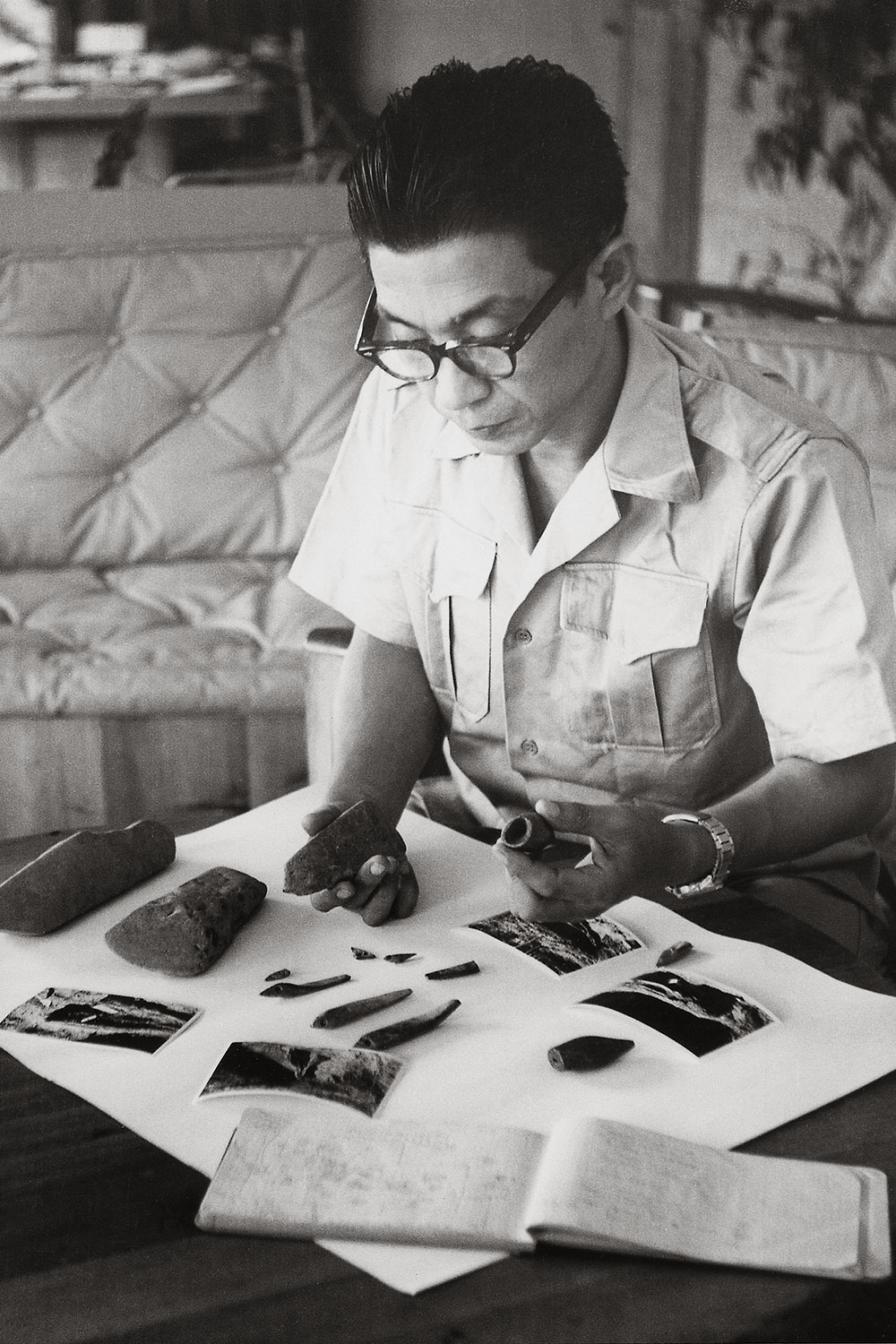
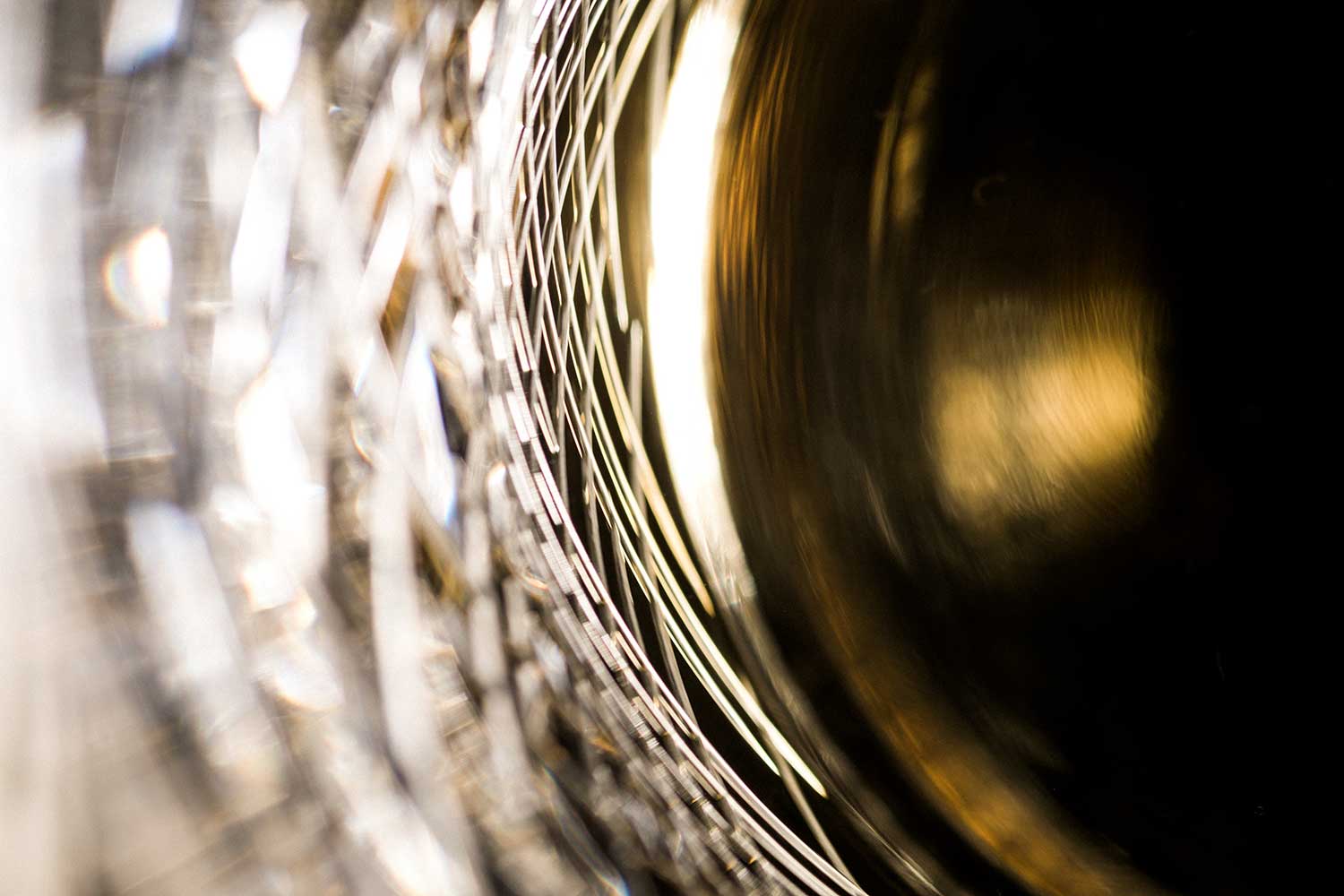

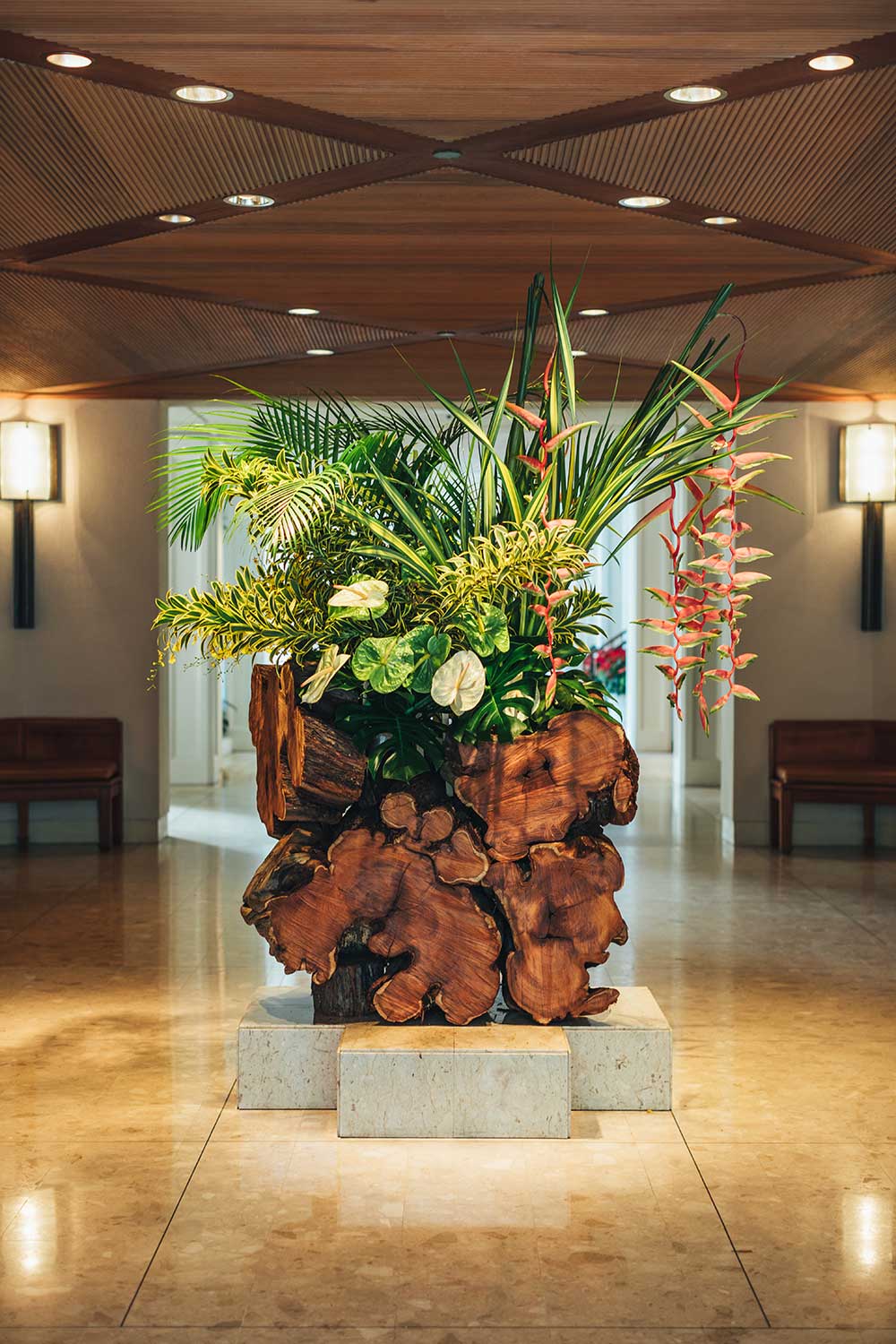









Share: